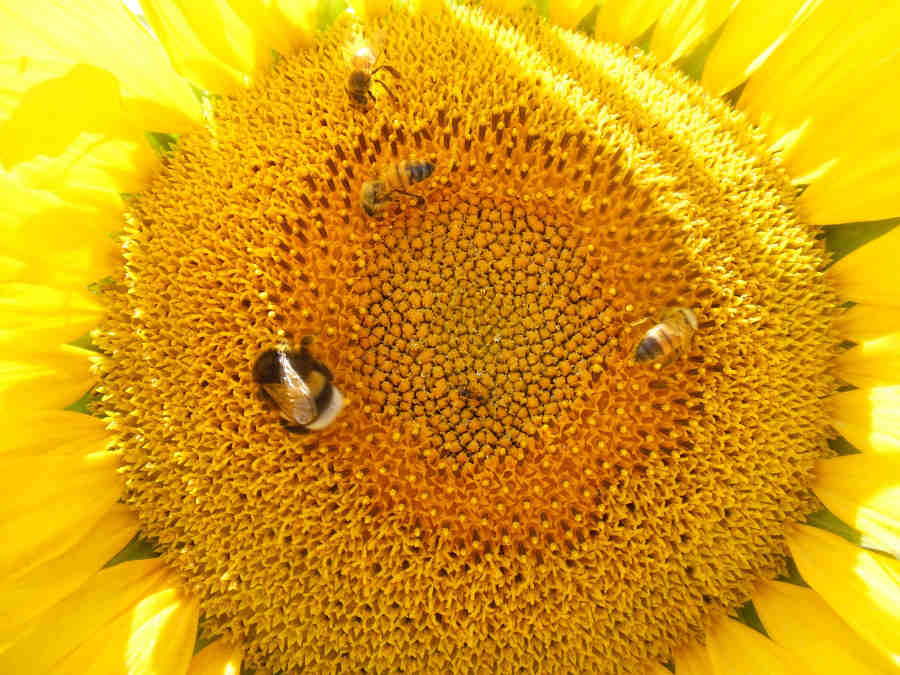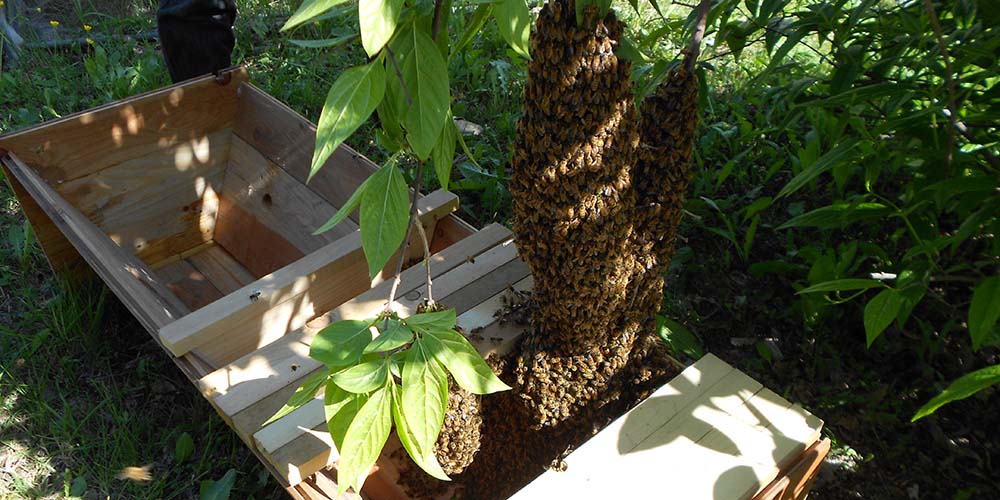One health is a quite recent concept. It comes from the insight that humans, domestic animals and wildlife face similar health issues. As the OIE (the World Organisation for Animal Health) puts it:
“Human health and animal health are interdependent and bound to the health of the ecosystems in which they exist. ”
This was the point where they got me. I always say that my patients have at least six legs (as a member of a family with many physicians, nurses etc. whose patients have only two). In addition to that, I deeply care about ecosystems and their functioning. Pollination is essential for this and my six-legged patients, the bees, are very specialized pollinators. I also very often talk about that pollinator diversity is essential. I won’t go into that today, but here’s a post I wrote about this topic.
Honey bees are domestic animals
Honey bees, in my opinion, are domestic animals and should be included in the One Health concept. I know that there’s a controversy about this: they’re insects, they could live without human care, you don’t control them like lifestock etc. Most people consider them “wild animals” and not domestic. However, and this a big one, fact is that most honey bee colonies don’t live in tree cavities in the forests but in artificial hives. Beekeepers manage them for honey production or pollination services. Like cows for milk or meat production, horses for riding, or dogs as companions.
On the other hand, honey bees depend on the environment much more than other domestic animals do. They can’t be kept in a stable, they have to fly out and collect pollen, nectar and water. This may be a reason for not considering them domestic. For me, however, this isn’t a valid argument. Humans manipulate and interfere with honey bee biology in quite drastic ways:
- They mass them on apiaries. Feral colonies don’t live in such densities, there are single colonies distributed widely in forests.
- They bring them down to the ground. If honey bees can choose, they nest in heights of about 5 m.
- Beekeepers avoid swarming. This is kind of a contraceptive action for honey bee colonies. Swarming is their act of reproduction.
- Honey bee colonies are “sedentary”, they usually stay at one place until they swarm. An exception may be the absconding behaviour, when they leave as a whole colony because of adverse conditions. But beekeepers transport hundreds and thousands of colonies over hundreds and thousands of kilometres.
Varroa increasing DWV infections
Because of these transports, they are exposed to emergent diseases and parasites. Varroa destructor is the most striking example of this. It’s originally a parasite of the Eastern Honey Bee, Apis cerana. And now the most important health issue for Western Honey Bees, Apis mellifera. They feed on the honey bees’ fat body, which is essential for their overwintering survival. In addition, they transmit secondary infections like viruses. And here’s where the One Health concept comes in.
One of the secondary infections associated with the varroa mite is the Deformed Wing Virus (DWV). Like its name suggests, its most obvious symptom are deformed wings, the bees aren’t able to fly and have a reduced life span. There is more and more evidence that it’s this virus that finally kills bee colonies infested with varroa mites. The association of parasitic mite and DWV is quite unlucky. The parasite transmits DWV while feeding on the bees. By this changed way of transmission, the virus titres, i.e. the number of virus particles found in the bees, increases. Varroa mites are kind of an intensifier for the viral infection.
One Health – interaction between managed and wild species
Why this is important for the One Health concept: DWV is not a specialized honey bee virus. It infects also other bee species, like bumblebees. One of the infection routes for bumblebees are flowers on which they feed together with honey bees. A managed species interacts with unmanaged species. Now we have two factors that enhance the negative spirale:
Firstly, with the varroa mite we have higher virus titres in the honey bee colonies and, therefore, the possibility for exposure of other bee species also increases. A recent study in UK and France showed that in the presence of varroa, more bumblebees carried DWV. In addition, they also had more virus particles in their bodies as well.
Secondly, as honey bee colonies are crowded in apiaries, also the density of honey bee foragers is higher and the exposure increases further. Another study in Vermont/USA found DWV on flowers only on sites near apiaries. They also observed higher honey bee densities on these sites.
Honey bees, as domestic animals, transmit their diseases to bumblebees, which are unmanaged species. You may say that the One Health concept cares mainly about the impact of animal health on human health. Moreover, that in this case we have only an unfortunate transmission to another animal species without affecting humans. Well, I disagree.
Human health and (honey) bee health
Of course, the impact of DWV transmission between honey bees and bumblebees doesn’t have a direct effect on human health like rabies or other diseases that are transmitted from other animals to humans. However, health means more than just the absence of disease. Food security is a huge aspect of health, for humans, for livestock or for bees. Bees are pollinators and by this, together with other insects, contribute substantially to food security. In pollination-dependent crops, they increase the yield amount and quality as well as the nutrient content of the crops.
Therefore, I dare say that human health depends also on reliable pollination services. If now a managed pollinator, honey bees, transmit diseases to unmanaged pollinators, bumblebees, this is an issue that fits into the One Health concept. Perhaps not as evident as diseases of animal origin, but as the approach includes ecosystems, it has to be thought in a wider context.
In my opinion, keeping animals, be it vertebrates or insects, is a responsibility. With honey bees (and other managed pollinators), this responsibility increases: they interact with the environment much more than cattle or poultry in a stable. An approach like the One Health concept, that explicitly includes “healthy ecosystems”, therefore, definitely must consider managed pollinators as well.
Well, vets out there, what do you think?




HI
There is nothing in the One Health concept that precludes your bees. OH is a 3-way concept which argues that human, animal (be that domestic, production or wild animals) and ecological health are inextricably linked. The issue of our continue environmental destruction and the effects that this has both directly on humans and indirectly on humans via emerging zoonotic diseases is critical, and is overlooked by many OH commentators. Bees are just part of the all-animal picture and also a reflection on ecological health. They do count!
Sadly, most OH interventions get bogged down in looking at diseases like SARS, Zika etc and fail to go beyond the immediate implications of a current disease threat. But true OH looks at the whole.
Hi Lesley,
thank you for your comment. I know that the One Health concept is broader and includes the term “environmental health” or “ecological health”. And I didn’t say that anything precludes bees from this concept, but that they’re not considered much until now. You say it in the second part of your comment: generally, it’s treated only considering immediate health threats from emerging diseases. If you look it up at the OIE site, it’s all about zoonotic diseases. Which is important, but only a very small part of the whole. In this post, I wanted to broaden the concept even more in the food security aspect. I know bees are just a part of the whole, but it’s the part I’m able to contribute.
You say it in your comment: most interventions are limited to SARS etc. This doesn’t do the concept justice, don’t you think?